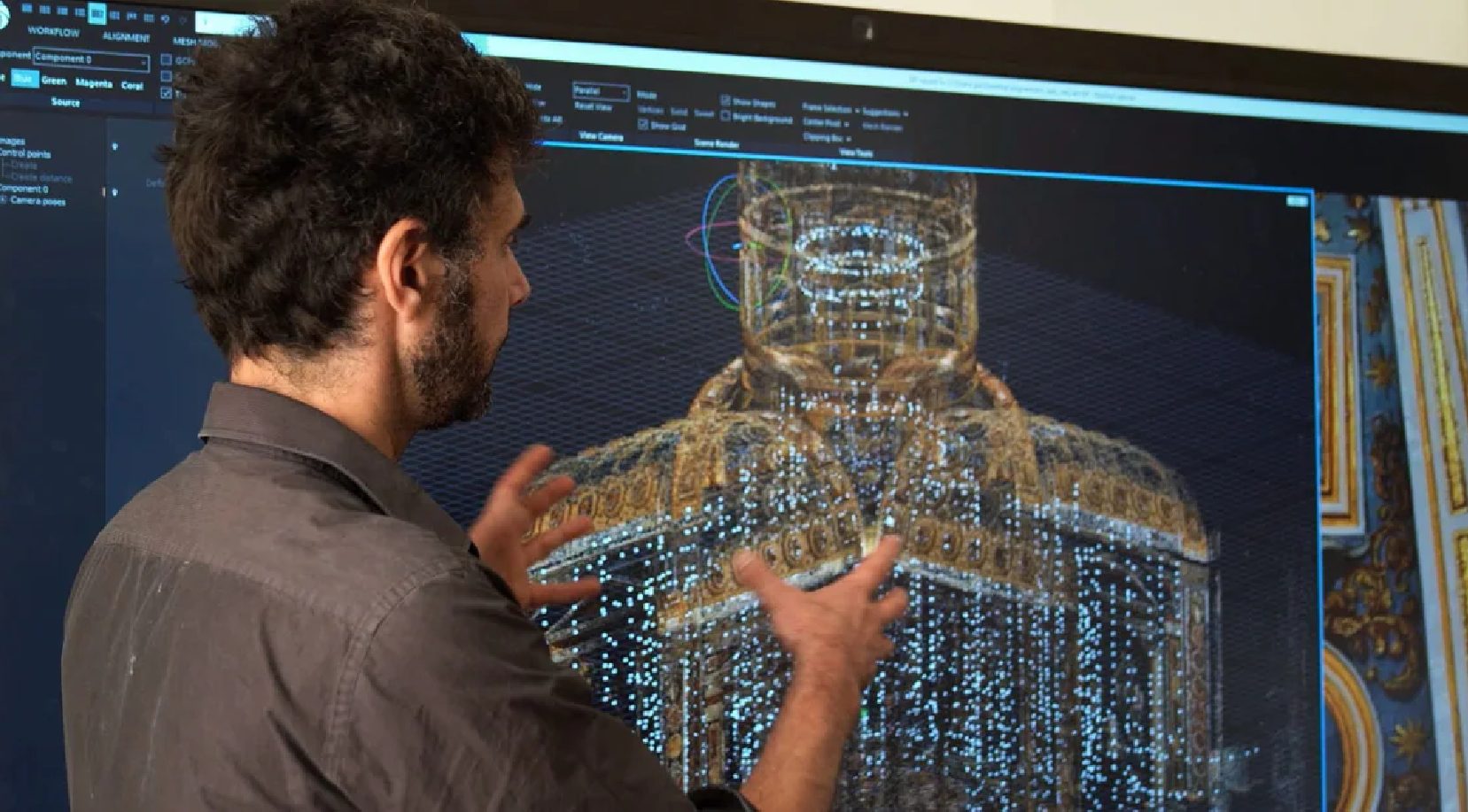(ZENIT News / Vatican City, 11.11.2024).- In an ambitious project that melds ancient spirituality with cutting-edge technology, the Vatican has unveiled a digital twin of St. Peter’s Basilica in collaboration with Microsoft, aimed at preserving and sharing the Basilica’s historic, artistic, and spiritual wealth with a global audience. Cardinal Mauro Gambetti, head of the Basilica and the Fabbrica di San Pietro, announced the initiative at a press briefing on November 11, 2024, underscoring the mission to make the Basilica a “space for all people” as it prepares to welcome millions of pilgrims for the upcoming Jubilee in 2025.
Capturing St. Peter’s Essence Through Technology
Using drones, high-resolution cameras, and laser imaging, a team of experts captured over 400,000 images of St. Peter’s Basilica over three weeks. These images were transformed into an ultra-precise 3D model by Microsoft’s AI for Good Lab, together with the French company Iconem, employing advanced AI algorithms to ensure the digital twin reflects the Basilica’s intricacies with millimeter precision. This 3D model, hosted on an interactive online platform, will launch on December 1, allowing visitors anywhere to experience the Basilica’s exterior and interior, with an option to explore through an educational interface modeled after the popular game “Minecraft.”
“Thanks to AI, we can now admire this extraordinary place of faith, art, and history like never before,” said Brad Smith, Microsoft’s vice chairman and president. This collaboration represents not only a groundbreaking educational tool but also a means for visitors worldwide to connect with the Basilica’s spiritual atmosphere, even from afar.
New Opportunities for Pilgrims, Scholars, and Conservation Efforts
Designed to benefit both general visitors and specialists, the digital Basilica will provide pilgrims with an immersive virtual journey and academics with a wealth of details invaluable for restoration and research. The precise 3D rendering has already helped uncover structural vulnerabilities, such as cracks and missing mosaic tiles, that would otherwise be difficult to identify without up-close examination. “In one of our scans, we even found tiny spider nests in the dome’s mosaic,” Cardinal Gambetti remarked, illustrating the digital model’s level of detail.
Two new interactive exhibits, “Petros Eni” and “Petros Eni Octagon”, will launch alongside the digital twin, giving visitors insight into the Basilica’s evolution through time with immersive displays. These exhibits promise to add a dimension to the experience for those who can visit the Basilica in person.
Preserving St. Peter’s for Future Generations
In addition to offering an unprecedented virtual experience, the project seeks to support the Basilica’s long-term conservation. Father Francesco Occhetta, secretary of the *Fratelli Tutti* Foundation, which coordinated the project, highlighted that the digital twin aligns the sacred space with its physical roots at the tomb of St. Peter, ensuring that this iconic symbol endures. “Our goal is not merely technological,” he said. “The digital Basilica serves as a way for people across the globe to encounter this sacred place in their spiritual journey, wherever they are.”
A Vision of “The Basilica in Outreach”
Cardinal Gambetti emphasized that the project marks a new chapter in the Basilica’s mission to serve a global audience, inspired by Pope Francis’ vision of a welcoming “house of prayer for all peoples.” A coordinated plan to digitalize records and establish platforms for virtual engagement underscores the broader initiative to make St. Peter’s Basilica accessible in ways that resonate with today’s digital culture.
“We are making history,” Gambetti said. “For centuries, the Church has adapted its message to the language of each age, and now, with technology, we are opening St. Peter’s doors wider than ever.” The Basilica’s digital twin, he added, represents a timeless vision, inviting everyone into its sacred, artistic, and spiritual embrace.
Thank you for reading our content. If you would like to receive ZENIT’s daily e-mail news, you can subscribe for free through this link.



